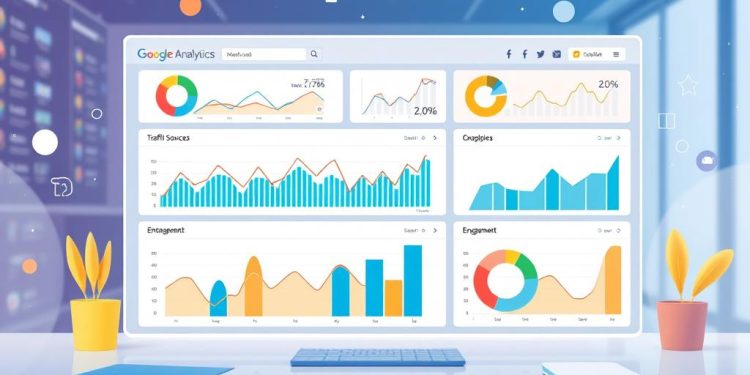In today’s data-driven world, choosing the right analytics tools is essential for your business to thrive. With various options available, it can feel overwhelming to pin down what best suits your needs. Business analytics is all about turning data into actionable insights, and making informed decisions relies heavily on effective tool evaluation.
To navigate this landscape, you must first understand your specific analytics requirements. Key aspects to consider include what you aim to achieve with your data, where your data comes from, and how complex it is. Additionally, assessing your team’s skills will guide you in selecting a tool that aligns with your capabilities. This guide will help you explore these factors and ensure that your choice leads to effective, data-driven decisions.
Understanding Your Business Requirements
When selecting an analytics tool, understanding your business requirements is essential. Begin by clearly defining your objectives for data analytics. This might include enhancing operational efficiency or improving customer segmentation to align with your business goals. Clarity in these objectives will guide your choice of metrics tracking and analytics features that will work best for your organization.
Defining Objectives for Data Analytics
It’s crucial to set specific objectives as these will direct the implementation process. Consider what you want to achieve through data analytics, such as:
- Improving decision-making processes.
- Increasing competitive advantage through data insights.
- Streamlining operations and reducing costs.
Identifying Data Sources
Recognizing your data sources is a vital step in the process. These may include:
- CRM systems that manage customer relations.
- Social media platforms for audience engagement analysis.
- Sales databases tracking transactional data.
Understanding what data you have on hand will help inform your choice of analytics tool and the metrics you want to monitor.
Assessing Complexity of Data
Analyze the complexity of the data. Organizations handle different volumes and types of data which may require customized analytics features. The complexity can impact performance and usability, making it necessary to find tools capable of seamlessly integrating with existing systems. Many companies report that up to 75% need their tools to fit within their current data architecture.
User Skills Evaluation
Evaluate the technical proficiency of your users. Knowing whether users are seasoned data scientists or casual business users will influence your selection. Platforms with user-friendly interfaces tend to have higher adoption rates. Additionally, studies indicate that tools requiring minimal technical expertise are preferred by 80% of employees. Matching the users with the right tool can enhance overall productivity.
| User Skill Level | Preferred Tool Type | Common Challenges |
|---|---|---|
| Data Scientists | Advanced Analytics Tools | Complexity in data interpretation |
| Business Analysts | Self-Service Analytics Tools | Lack of integration with existing systems |
| General Business Users | User-Friendly Analytics Tools | Barrier to adoption due to complexity |
Key Features to Look for in Analytics Tools
When selecting the right analytics tool for your business, it’s important to focus on several key features that enhance overall functionality and usability. A thorough understanding of these features will support effective platform comparison and ensure you choose the most suitable solution for your needs.
Data Integration Capabilities
Data integration is vital for any analytics tool. With 43% of businesses struggling to integrate data from various sources, the right solution should offer seamless connections with databases and third-party applications. Utilizing strong data integration capabilities allows you to consolidate various datasets, providing a complete view of your business metrics.
Data Processing and ETL Features
Efficient data processing, particularly through ETL (extract, transform, load) features, is essential. The best analytics tools enable you to prepare data for analysis, ensuring that your insights reflect accurate and relevant information. Businesses that prioritize real-time data processing capabilities often find this feature particularly beneficial for informed decision-making.
Data Visualization Tools
Clear data visualization tools play a significant role in interpreting complex data insights. Around 94% of companies report improved trend identification through effective visualization, demonstrating its importance in analytics features. Look for tools that offer customizable dashboards, automated reporting, and user-friendly interfaces to enhance your analytics experience.
Advanced Analytics and Predictive Capabilities
Advanced analytics features, including predictive analytics and machine learning, can elevate your decision-making capabilities significantly. Research shows that organizations using such tools are five times more likely to make faster decisions. Consider options that offer robust predictive modeling, allowing your business to align strategies based on forecasted trends.
| Feature | Importance | Key Benefits |
|---|---|---|
| Data Integration | High | Centralizes data, enhances completeness |
| Processing & ETL | High | Prepares data for analysis, ensures accuracy |
| Data Visualization | Very High | Improves trend identification, clear communication |
| Advanced Analytics | High | Enhances decision-making, increases responsiveness |
Choosing Analytics Tools: Comparing Popular Options
When it comes to selecting the right analytics tool for your needs, having a solid understanding of the marketplace can be invaluable. Various analytics solutions have emerged, each offering unique functionalities that cater to different business analytics needs. Here’s an overview that helps in tool evaluation and assists in making an informed platform comparison.
Overview of Well-Known Analytics Tools
Several prominent tools stand out, providing a variety of capabilities suitable for different enterprises:
- Microsoft Power BI: Supports numerous data sources and facilitates automated machine learning model building, making it a robust choice for modern businesses.
- Tableau: Known for its exceptional data visualization capabilities, Tableau can be utilized either on the cloud or on-premises, employing VizQL to enhance user experience.
- Google Data Studio: A free tool that seamlessly integrates with most Google applications, ideal for marketing analytics.
- SAS Business Intelligence: While its features are comprehensive and suited for advanced analytics, the high cost makes it more appropriate for larger enterprises.
- Redash: Provides a cost-effective solution for querying data sources and automating update schedules, appealing to smaller businesses.
- Jupyter Notebook: A versatile option that supports more than 40 programming languages, making it suitable for developers who need flexibility.
Strengths and Weaknesses of Each Tool
Understanding both the strengths and weaknesses of these tools is crucial for making informed decisions. The following table provides a comparative analysis aimed at aiding your platform comparison:
| Tool | Strengths | Weaknesses |
|---|---|---|
| Microsoft Power BI | Robust data modeling capabilities, affordable pricing. | Learning curve for complex analytics. |
| Tableau | Powerful visualization and quick insights. | Can be expensive for large teams. |
| Google Data Studio | Free, integrates well with Google services. | Limited outside Google ecosystem. |
| SAS Business Intelligence | Comprehensive and advanced analytics. | High costs and steep learning curve. |
| Redash | Cost-effective for querying data. | Less feature-rich than some competitors. |
| Jupyter Notebook | Highly customizable and supported libraries. | Requires programming skills for setup. |
This overview of various analytics tools provides insight into their capabilities and limitations. Engaging in a thorough tool evaluation will lead you to choose the right solution that aligns with your business goals and analytical requirements.
Evaluating Integration and Compatibility
The evaluation of integration capabilities and compatibility stands as a cornerstone when selecting your analytics tools. Ensuring these tools can seamlessly connect with your existing data systems will provide a smoother workflow and enhance productivity.
Connecting with Existing Data Systems
Compatibility is a critical factor for your analytics tool selection. Research indicates that 60% of users prioritize the ability of tools to integrate with their current systems, including CRM and ERP solutions. A robust integration capability minimizes the risk of disruptions, allowing you to leverage your existing data effectively.
Consider choosing tools that offer flexible API availability. This flexibility allows for custom integrations that can adapt to your specific business needs. Recognizing that 70% of organizations face data integration challenges, selecting a tool equipped for these tasks is vital for overcoming barriers that hinder analytics capabilities.
Workflow Support and API Availability
Incorporating workflow support is essential for achieving operational efficiency. Your analytics tool should seamlessly fit into established processes without requiring significant adjustments. This approach enhances user acceptance and adoption, given that 30% of analysts report a steep learning curve as a barrier to productivity.
Many organizations have found that utilizing an integrated suite can reduce the complexities associated with managing multiple specialized tools. Those that combine workflow support with solid integration capabilities can significantly enhance decision-making processes. In fact, 61% of businesses report improved decision-making after implementing effective analytics strategies.
Assessing Costs and Expected ROI
Understanding the financial implications of adopting an analytics tool is essential for informed decision-making. You must consider both upfront and ongoing costs to effectively assess the feasibility of your investment. This tool evaluation not only influences your budget but also plays a crucial role in determining your expected ROI.
Understanding Upfront and Ongoing Costs
Upfront costs typically include expenses such as licensing or subscription fees. Ongoing costs may encompass maintenance, training, and additional software updates. A thorough analysis of these expenses will help you gauge the overall financial commitment associated with the tool. Common cost factors include:
- License fees
- Training and support costs
- Hardware requirements
- Integration fees with existing systems
Calculating Potential ROI
Calculating expected ROI is crucial to evaluating whether the investment is worthwhile. Anticipated ROI measures the potential returns based on estimated costs and revenues before the project begins. The basic formula is:
ROI = (Net Profit / Cost of Investment) x 100
For example, if you expect to sell 1,000 chocolate bars priced at $3 each, your estimated revenue would be $3,000. If the total project expenses amount to $2,100, the net profit is $900. This gives an anticipated ROI of 42.9%, calculated as follows:
ROI = ($900 / $2,100) x 100
By comparing anticipated and actual ROI after project completion, you gain invaluable insights into the project’s success and effectiveness. If the selling price decreases to $2.25 per chocolate bar, total revenue drops to $2,250, resulting in an adjusted net profit of $150 and a new actual ROI of 7.14%. This highlights the importance of continuous monitoring of costs and revenues.
| Metric | Value |
|---|---|
| Anticipated Revenue | $3,000 |
| Total Expenses | $2,100 |
| Net Profit | $900 |
| Anticipated ROI | 42.9% |
| Adjusted Revenue | $2,250 |
| Adjusted Net Profit | $150 |
| Actual ROI | 7.14% |
Aligning your ROI calculations with business goals and incorporating both tangible and intangible benefits, such as improved decision-making, will maximize your analytics tool’s value. By adopting best practices and using pilot projects to refine your approach, you pave the way for smarter investments and better resource allocation in future projects.
Conclusion
Choosing the right analytics tool is a fundamental step in leveraging data to inform your business analytics strategy. By carefully evaluating your business requirements, you can determine which features are most essential for tracking key metrics and driving data-driven decisions. Tools such as Microsoft Excel and Google Data Studio offer user-friendly interfaces suitable for beginners, while more advanced options like Python and R cater to expert users seeking in-depth analysis.
The variety of available options, including Apache Hadoop for massive datasets and IBM SPSS for statistical analysis, allows you to find the perfect fit for your organization’s specific needs. Important considerations include integrating with existing systems, understanding costs, and calculating potential ROI. For example, organizations that successfully implement these analytics tools can see significant reductions in costs and improved efficiency, making the investment worthwhile.
Ultimately, selecting your analytics tools should be approached systematically, ensuring alignment with your strategic goals. By confidently navigating this process, you will empower your organization to harness the full potential of its data, contributing to enhanced operational efficiency and more successful business outcomes.







